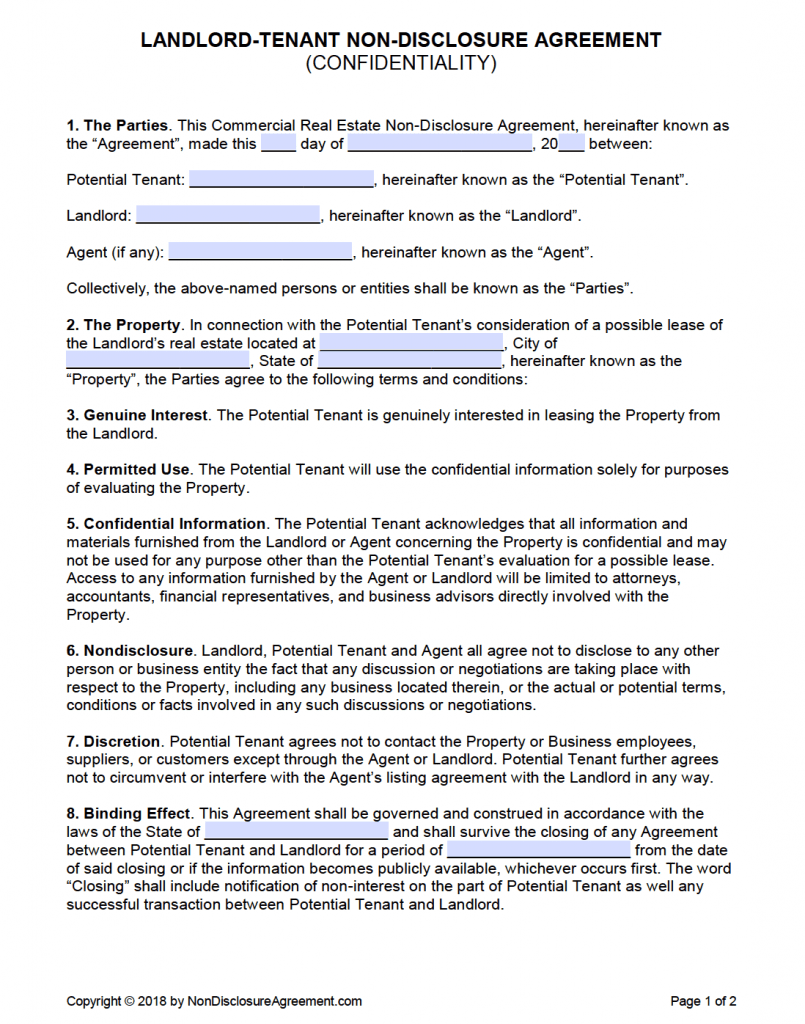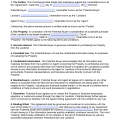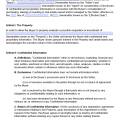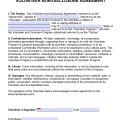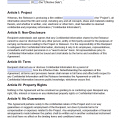Landlord-Tenant Non-Disclosure Agreement (NDA)

The landlord-tenant non-disclosure agreement is used when the owner of residential rental property (the “Landlord”) discloses secret or private information about a property to potential tenants. The information may have to do with property revenue, taxes, planned capital improvements or other confidential information that provides the landlord with an advantage over other landlords. At the same time, the landlord may be required by federal, state or local governments to make certain disclosures – for example, disclosures about security deposits and lead paint. Because these types of disclosures are mandated by law, it is unlikely these disclosures can also be protected under an NDA. Because this agreement is not mutual – information provided by the tenant is not shielded – and because there is a narrow range of protected information provided by the landlord, this NDA is shorter and less legalese than those used in other business situations. The tenant should sign this prior to the landlord’s disclosure of confidential information. You (the landlord) can also incorporate these NDA provisions into your rental agreement. When providing confidential information, it should be labeled as “confidential.”
Real Estate Buyer NDA – Allows the property owner to disclose proprietary information about their property to a prospective buyer.
Sample
LANDLORD-TENANT NON-DISCLOSURE AGREEMENT
This Landlord-Tenant non-disclosure agreement (the “Agreement”) is made between _________________ (the “Landlord”) and _________________ (the “Tenant”) and is effective _________________. The parties agree as follows:
The Agreement is intended to prevent the unauthorized disclosure of Confidential Information (as defined below) regarding the residential rental property located at _________________ (the “Property”). “Confidential Information” is proprietary information relating to the Property including but not limited to: revenue, taxes, planned capital improvements, the identity or financial status of investors or partners, or other information conveyed in writing or in discussion that is indicated to be confidential. Without Landlord’s prior written consent, Tenant will not: (a) disclose Confidential Information to any third party; (b) make or permit to be made copies or other reproductions of Confidential Information; or (c) make any commercial use of Confidential Information. Upon Landlord’s request, Tenant shall within thirty days return all original materials pertaining to Confidential Information. This Agreement and Tenant’s duty to hold Confidential Information in confidence shall remain in effect until whichever of the following occurs first: (a) Landlord sends Tenant written notice releasing it from this Agreement, or (b) Confidential Information disclosed under this Agreement ceases to be confidential.
In a dispute arising out of or related to this Agreement, the prevailing party shall have the right to collect from the other party its reasonable attorney fees and costs and necessary expenditures.
The parties consent to the exclusive jurisdiction and venue of the federal and state courts located in _________________ in any action arising out of or relating to this Agreement. The parties waive any other venue to which either party might be entitled by domicile or otherwise.
Landlord:
_____________________________________________ (Signature)
_____________________ (Typed or Printed Name)
Date: _____________________
Tenant:
_____________________________________________ (Signature)
_____________________ (Typed or Printed Name)
Date: _____________________
How to Write
EXPLANATION FOR LANDLORD-TENANT NON-DISCLOSURE AGREEMENT
Below we provide an explanation the Landlord-Tenant Non-Disclosure Agreement.
First Paragraph
Fill in your name or company name (Landlord). Fill in the name of tenant. Finally, fill in the date the agreement will take effect. This is often the date that the last party signs the agreement.
Second Paragraph
This paragraph identifies the property that is the subject of the transaction between the parties. Fill in the address (or addresses if there is more than one property).
This paragraph defines what is protected against disclosure. Keep in mind that if you are providing documentation, you should designate that information as confidential. If the information is spoken, you should announce the confidentiality.
This paragraph makes clear that your trade secrets must be kept in confidence by the tenant and may not be revealed to others without your prior written consent.
The tenant promises to return materials that you provided. The agreement gives the tenant 30 days to return the materials, but you can change this time period if you wish.
Third Paragraph
If you don’t include an attorney fees paragraph in your agreement, a judge may (in most states) order the award of attorney fees in cases where the theft of the trade secret was willful and malicious. It’s up to the judge, which makes things unpredictable. You are far better off using an attorney fees provision. The purpose of adding a jurisdiction provision to an NDA is to get each party to consent in advance to jurisdiction in one county or state and to give up the right to sue or be sued anywhere else.
Signing the agreement. Someone with the necessary authority must sign the agreement on behalf of each party. Each party should sign two copies and keep one. This way, both parties have an original signed agreement.
